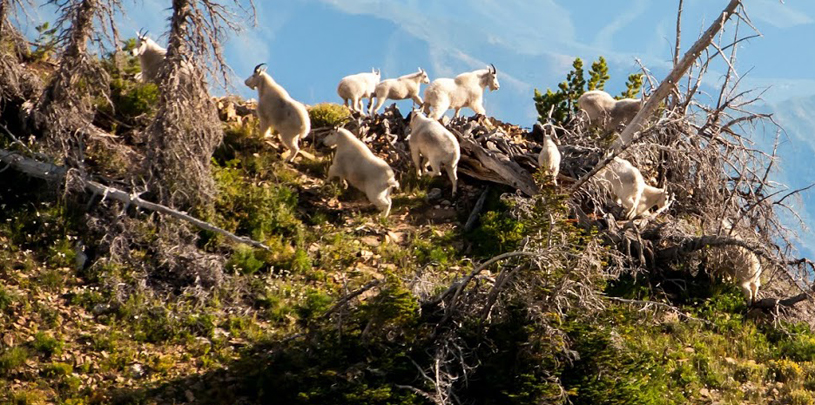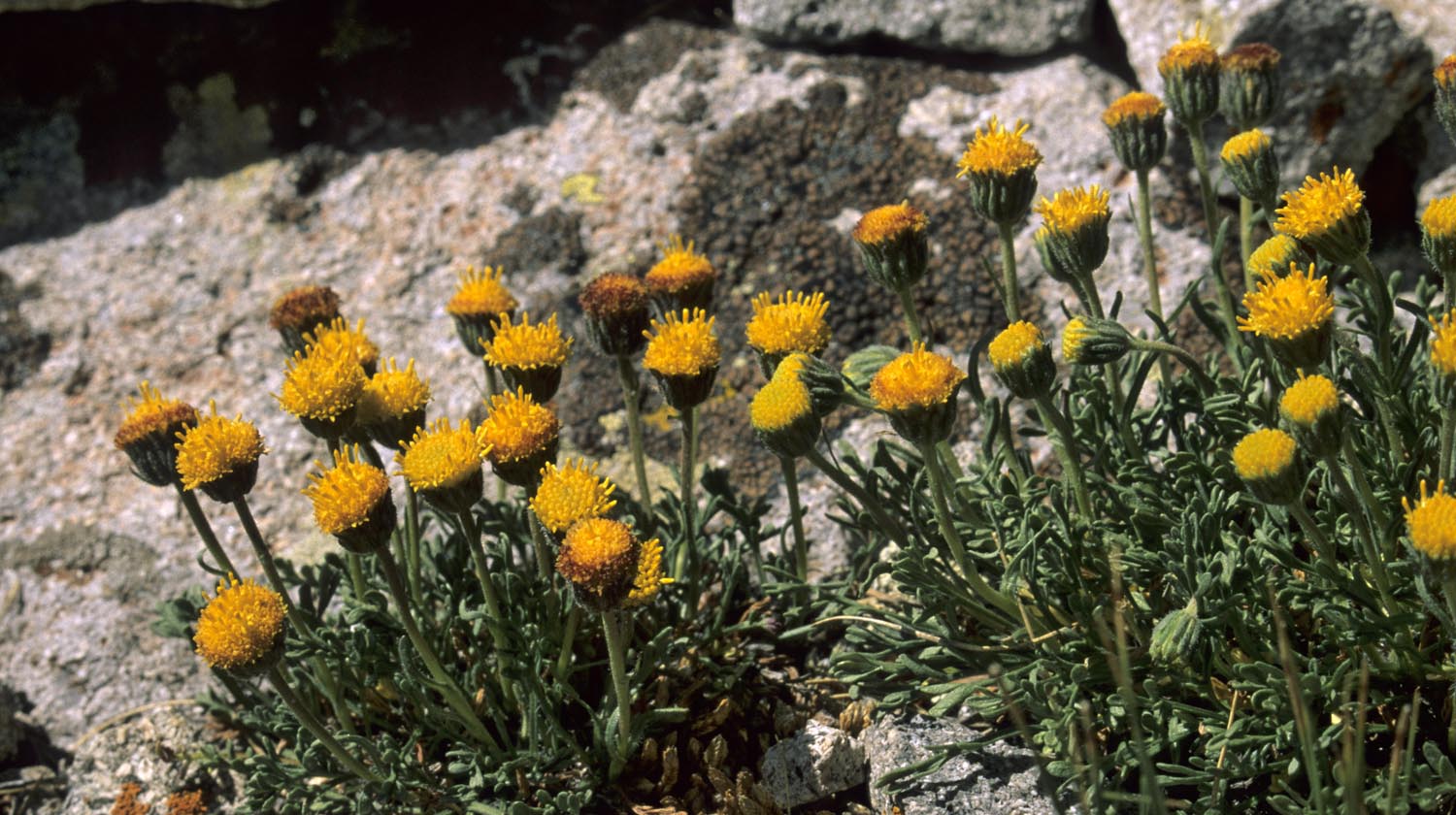
 by Mary O'Brien, Utah Forests Director
by Mary O'Brien, Utah Forests Director
As you read this, exotic mountain goats are tearing into slow-growing, alpine cushion plants, and devouring delicate flowers, mosses, lichens, and shrubs in a small alpine area high in the La Sal Mountains above Moab in southeastern Utah.
Thirty-five goats were airlifted into this remote mountain area in 2013 and 2014 by the state of Utah over the express objection of the Forest Service, which is responsible for protecting not only the alpine habitat generally, but specifically the unfenced Mount Peale Research Natural Area , which encompasses the highest peaks of the La Sal Mountains (elevation 11,000 to 12,700 feet). The fragile area was set aside for scientific study and research. The high La Sals are home to many alpine plants, including the La Sal daisy (pictured below), which grows no other place on earth.

U.S. Forest Service regulations require exotic species (like the goats) to be eradicated from research natural areas. The Manti La-Sal National Forest’s own management plan forbids exotic species in research natural areas, and the document that established the 2,400 acre Mount Peale Natural Research Area doesn’t allow exotic animals like the goats either. Nevertheless, the state aims to swell the herd to 200 mountain goats and sell hunting licenses, in defiance of these policies.
Because the Manti-La Sal National Forest has failed to take responsibility, on June 13, 2015, the Grand Canyon Trust, Utah Native Plant Society, and Wild Utah Project submitted a formal petition to Tom Tidwell, Chief of the U.S. Forest Service. The petition asks Chief Tidwell to prevent the Utah Division of Wildlife Resources from airlifting additional mountain goats into the La Sal Mountains, and to require the Manti-La Sal National Forest to arrange for the approximately 40 mountain goats currently living in the small alpine area to be removed.
Mountain goats are the wrong animal, in the wrong place, at a time when all cold-adapted alpine areas in the West are under stress from increasing heat and drought.
We’re losing alpine areas to climate change. And then, for very little reason at all, we introduce an exotic ungulate. Why not elephants? Don’t you think it would be neat to have elephants up here? Non-native goats in Utah's La Sal Mountains, High Country News
Mountain goats are not native to Utah, but starting in the 1960s, state wildlife managers introduced them to mountains across the state primarily for hunting and also for wildlife viewing. Today, a mountain goat hunting license in Utah can cost over $1,500, with individual licenses selling for thousands of dollars at auction.
Because Manti-La Sal National Forest managers are failing to protect the Mount Peale Research Natural Area alpine habitat according to their own regulations, the petition asks the Chief of the Forest Service to require them to do so and remove the exotic goats immediately.
Grand Canyon Trust, the Utah Native Plant Society, and Wild Utah Project have requested that Chief Tidwell respond to the petition by July 15.
You have the opportunity to comment on how you think some of the most beautiful landscapes in Utah should be managed for the next generation to come.
Read MoreTree ring data helps scientists and land managers protect old-growth pinyon and juniper trees.
Read MorePack your camera and head for the trees! The Colorado Plateau has some of the best displays of fall foliage all season long.
Read More